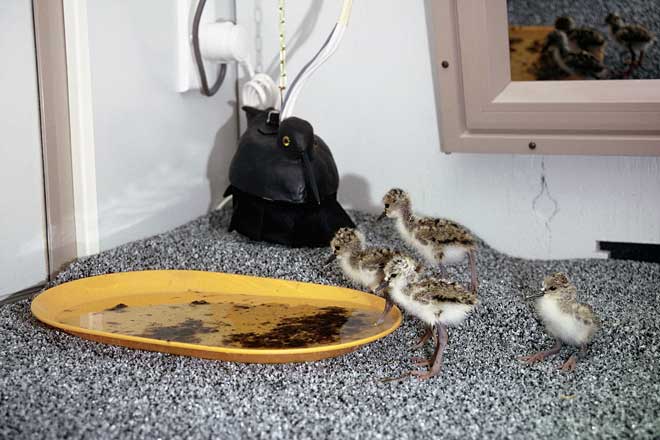
Since the early 1980s, the Department of Conservation has run a captive breeding programme near Twizel, in an effort to prevent black stilts from becoming extinct. Eggs are removed from nests to incubate, and the chicks are raised in captivity. Meanwhile, adults lay again, producing up to three more replacement clutches of four eggs in a breeding season. In the wild, predator control and habitat restoration has also improved their chance of survival. Numbers have slowly risen, and in 2020 there were 169 adults. The black plastic ‘adult bird’ in the corner encourages chicks to identify with black, not pied, stilts.
Te whakamahi i tēnei tūemi
Department of Conservation
Reference:
10050048
Photograph by Peter Cook
This item has been provided for private study purposes (such as school projects, family and local history research) and any published reproduction (print or electronic) may infringe copyright law. It is the responsibility of the user of any material to obtain clearance from the copyright holder.










Tāpiritia te tākupu hou